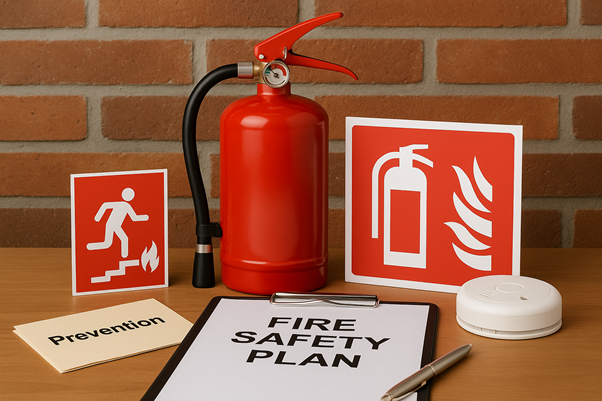
Fire safety is a critical concern for any business, regardless of size or industry. A single fire incident can result in devastating losses, including property damage, employee injuries, operational downtime, and even permanent closure. According to the National Fire Protection Association (NFPA), thousands of non-residential building fires occur annually, causing billions in damages. However, with a thorough and well-executed fire safety plan, businesses can significantly reduce the risk and impact of fire-related incidents. This article provides an in-depth guide to developing a comprehensive fire safety plan tailored to the needs of your business.
Why Fire Safety Planning Matters
Fires can start from various sources—faulty wiring, unattended equipment, flammable materials, or even natural disasters. A well-developed fire safety plan serves multiple functions:
- Prevention: Identifies and eliminates potential fire hazards.
- Protection: Ensures the safety of employees, customers, and assets.
- Compliance: Meets local fire codes and regulatory requirements.
- Continuity: Minimizes business disruption and aids in recovery after an incident.
Investing time and resources in fire safety planning not only fulfills legal obligations but also demonstrates a business’s commitment to workplace safety.
Step 1: Conduct a Fire Risk Assessment
A fire safety plan begins with a comprehensive fire risk assessment. This process identifies potential fire hazards, evaluates who may be at risk, and outlines measures to reduce those risks.
Key elements of a fire risk assessment include:
- Hazard identification: Look for sources of ignition (electrical systems, heat-producing equipment), fuel (paper, chemicals, furniture), and oxygen (open spaces, ventilation systems).
- Vulnerable areas and people: Identify areas with high foot traffic or critical operations, and note individuals with limited mobility who may need assistance during an evacuation.
- Likelihood and impact analysis: Evaluate how likely a fire is in each area and what the consequences would be.
- Current control measures: Review existing safety systems like smoke detectors, fire extinguishers, and sprinkler systems.
This assessment should be documented, reviewed regularly, and updated whenever significant changes occur in the workplace.
Step 2: Develop Fire Prevention Strategies
Preventing fires is the most effective way to ensure safety. Based on your risk assessment, implement targeted prevention strategies:
- Electrical safety: Conduct routine inspections of wiring, outlets, and equipment. Replace frayed cords and faulty connections immediately.
- Storage of flammable materials: Use proper storage cabinets and maintain safe distances from heat sources.
- Workplace cleanliness: Regularly remove waste and avoid clutter that can serve as fuel for fires.
- Maintenance protocols: Schedule maintenance for machines and systems that generate heat or have fire risk potential.
Educating employees about these preventive measures is equally important. Make fire prevention part of your workplace culture.
Step 3: Establish Fire Detection and Suppression Systems
No fire safety plan is complete without proper detection and suppression mechanisms in place:
- Smoke and heat detectors: Install in all key areas and ensure they are interconnected and regularly tested.
- Fire alarms: Should be loud, have visual indicators (for the hearing-impaired), and be connected to emergency services where possible.
- Fire extinguishers: Choose the correct type for each risk (e.g., CO2 for electrical fires, foam for combustible materials). Train employees on proper usage.
- Sprinkler systems: Effective at controlling and often extinguishing fires before the fire department arrives.
- Fire doors and barriers: Limit the spread of flames and smoke and protect evacuation routes.
Regular testing, maintenance, and inspections of these systems are essential for keeping them functional and compliant with codes.
Step 4: Create a Clear Evacuation Plan
Evacuation procedures are the backbone of a fire safety plan. They must be simple, well-communicated, and practiced frequently.
- Escape routes: Mark at least two exit routes from every area. Keep hallways and exits unobstructed at all times.
- Emergency lighting: Ensure that lighting is available in hallways and exits in case of power failure.
- Assembly points: Designate safe outdoor areas where employees should gather for a headcount.
- Evacuation coordinators: Assign trained staff to help guide people, assist those with disabilities, and communicate with emergency responders.
Drills should be conducted regularly—at least twice a year—to test the evacuation process and improve response times.
Step 5: Train Employees
Your plan is only as effective as the people who implement it. Fire safety training should be part of onboarding and ongoing employee education.
Training topics should include:
- How to identify and report fire hazards.
- The proper use of fire extinguishers.
- Steps to take when a fire alarm sounds.
- Evacuation procedures and routes.
- Special instructions for designated fire wardens or team leaders.
Make training interactive and tailored to different departments. Provide refresher courses and update materials when changes occur in your facility or processes.
Step 6: Plan for Business Continuity and Recovery
Fire incidents don’t end with evacuation. The aftermath can be just as disruptive to business operations. Planning for continuity is critical:
- Backup data storage: Store important business data offsite or in the cloud.
- Insurance: Ensure you have comprehensive commercial fire insurance that covers property, equipment, and loss of income.
- Recovery team: Designate a group responsible for damage assessment, communicating with stakeholders, and initiating business recovery steps.
- Temporary workspace arrangements: Have a plan in place for operating offsite if needed.
Being prepared for recovery minimizes financial loss and helps businesses reopen sooner.
Step 7: Stay Compliant with Local Regulations
Each city or region may have specific fire safety codes for businesses, including inspection requirements, occupancy limits, and mandatory safety equipment. Ensure your fire safety plan complies with:
- Local fire department standards
- Occupational Safety and Health Administration (OSHA) guidelines
- Building codes and insurance requirements
Non-compliance not only increases the risk of damage and liability but can also result in fines or shutdowns.
Step 8: Regularly Review and Update the Plan
Fire safety is not a one-time project. It requires ongoing evaluation and updates as your business grows or changes.
Review your fire safety plan at least annually or when:
- New equipment is installed.
- The layout of the premises changes.
- New hazards are introduced.
- After a fire drill or real emergency.
Invite feedback from staff to identify any confusion or areas for improvement.
Conclusion
A comprehensive fire safety plan is an indispensable part of running a responsible and resilient business. By proactively identifying risks, establishing robust prevention and response strategies, training employees, and planning for recovery, businesses can protect lives, assets, and their long-term operations.
Remember: fire safety is not just about compliance—it’s about care. When businesses take fire safety seriously, they foster a culture of preparedness, confidence, and shared responsibility.
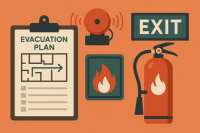
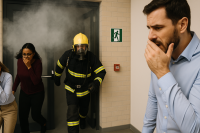
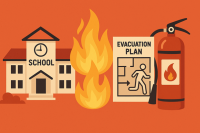
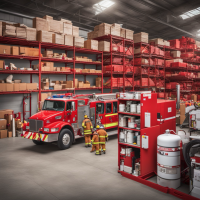
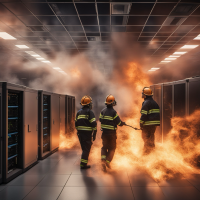
Leave A Comment